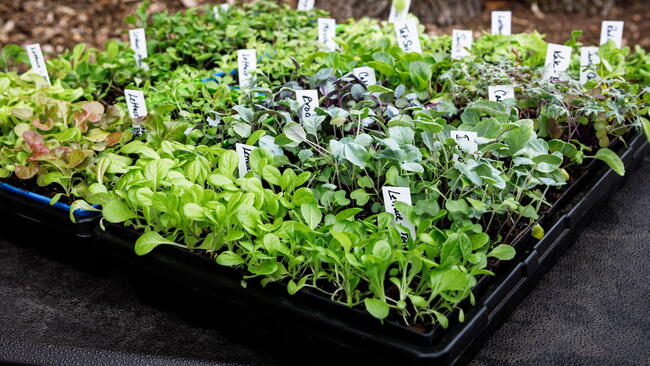Plan a Vegetable Garden Layout for Year-Round Gardening
In this short video, we share six proven strategies to keep your homegrown harvests coming year-round.
1. Extend the Growing Season
Use row covers and cold frames to provide additional warmth and shelter in spring and fall. Grow crops next to sheltered, sun-facing walls to help create a warm microclimate that can give plants a longer growing season. In the wall, sun-facing walls help cucumbers, peppers and other tender plants to continue to ripen.
2. Keep Crops Going Over Winter
Salad leaves such as mizuna, winter lettuce and mustard, leafy greens such as chard, spinach and kale, plus carrots, parsnip, beets and leeks will grow right through the winter.
In colder climates, a cold frame or greenhouse is essential to keep crops going over winter. Space plants generously for good air circulation and to make the most of the weak winter sunlight. Pick salad crops and greens little and often so they have the energy to replace their harvested leaves.
3. Avoid the ‘Hungry Gap’
Careful planning is needed to avoid the ‘hungry gap’—that time when the previous growing season’s crops have been eaten but the current season’s aren’t yet ready.
Plant broccoli, cabbage and late-season leeks in late summer to stand over winter and join the last of the winter-stored produce. Some perennial crops can also help plug the hungry gap, for instance asparagus and rhubarb.
4. Get Ahead
You can enjoy an early start and an earlier harvest for crops such as onions, cabbage and chard by sowing under cover. Many seedlings can also be started off indoors under grow lights.
Sow onions, chard and peas into plug trays from late winter to transplant outdoors in spring. You can bring forward the sowing date for other early crops by a couple of weeks by pre-warming the soil. To do this, cover the soil with row covers or cloches a few weeks before you’re ready to sow.
5. Spread Out Your Harvests
Sowing quick-maturing plants little and often right through spring and summer for a steady succession of harvests. Choose a mix of early, mid and late-season varieties to really spread out your harvests so that, for instance, you can enjoy carrots from mid spring to late winter, or strawberries from early summer through to fall.
6. Succession Plant
Plant succession crops that will mature in fall and winter from midsummer onwards, for instance maincrop carrots, celeriac, bulb fennel, and bush beans.
Set aside a dedicated ‘nursery’ area in a greenhouse or cold frame, or in pots kept in a sheltered, sunny spot (or somewhere you can provide some shading if you experience hot summers). This way, you can raise crops from seed so they’re ready to transplant the moment another crop is harvested.
Using the Garden Planner
If you have our Almanac Garden Planner, there are many powerful features to help you manage your space and your time.
- The Succession Planting feature allows you set the dates your plants will be in the ground, then view your plan during a specific month so you can see when gaps will appear, making it easy to plan what will follow on and when.
- The Custom Filter button makes it simple to choose plants suitable for sowing or planting out at different times in your area.
- The Plant List indicates how crop protection such as a row cover will affect sowing and harvesting dates – ideal for planning those late and early-season vegetables.
A little time spent working out what you can grow, when, is sure to yield something tasty to enjoy at any time of year!








